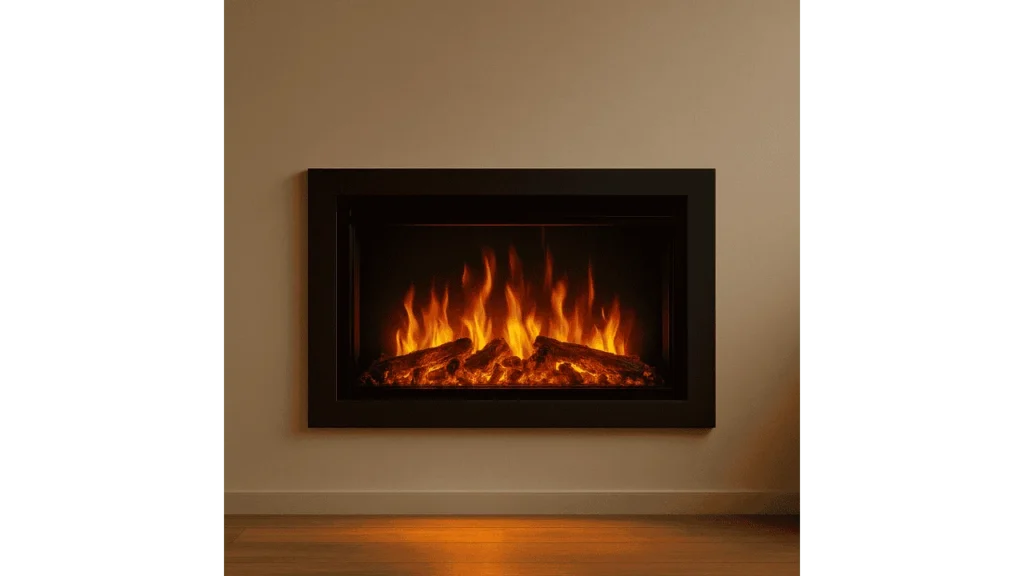Waking up or walking into a room and finding your electric fireplace running on its own can be haunting and not just about the unexpected heat. This situation can also lead to higher energy bills or even potential safety concerns. From minor quirks in the remote to deeper hardware malfunctions, several factors could be causing this issue. I am going to explain the most common causes of spontaneous activation and share practical troubleshooting tips to help you take control and prevent it from happening again.
Common Causes of Spontaneous Activation
Remote Control Interference or Faulty Remote
One of the most frequent culprits is a malfunctioning or overly sensitive remote control. Stuck buttons, a jammed IR signal, or even interference from other electronics like TVs or sound systems can unexpectedly trigger the fireplace. Some remotes also send out a continual “keep-alive” signal. If the remote’s battery is dying or the signal is disrupted, the fireplace may misinterpret this as a command to turn on. Simply removing the remote’s batteries or blocking its IR sensor can help identify if it’s causing the random activations.
“We’ve seen older remotes trigger electric fireplaces unintentionally, especially when batteries are low or signals bounce off nearby surfaces,” says technician Lara Jensen from HeatTech Systems.
Enabled Timer or Scheduling Function
Electric fireplaces often include built-in timers or scheduling features meant to enhance convenience, but they can sometimes activate the unit without your knowledge. A timer that was accidentally set, even weeks ago, might still be active, causing the fireplace to turn on at odd times. Checking your manual for steps to reset or disable all timers can often eliminate the problem. Double-checking this function is especially important if multiple people in the household access the settings.
Thermostat or Temperature Sensor Issues
If your unit has a built-in thermostat, it may be turning on in response to a false temperature reading. A failing or miscalibrated sensor might interpret the room as being colder than it is, prompting the heater to activate automatically. Over time, thermostats can become less accurate, especially if vents are blocked or the sensor is exposed to inconsistent airflow. Resetting the unit and ensuring vents are clean can help improve sensor reliability.
Read More: 28 Fresh Rustic Fireplace Ideas for Contemporary Homes
Power Fluctuations or Circuit Problems
Electric fireplaces are sensitive to voltage fluctuations, especially during storms or in homes with aging wiring. A power surge or spike might reset the unit’s internal controls, making it restart or turn on by default. Similarly, a worn or faulty circuit breaker can cause unexpected behavior. Using a surge protector designed for high-wattage appliances and ensuring the fireplace is on its own dedicated circuit can protect against these issues.
Internal Control or Software Glitches
Sometimes, the issue stems from within the fireplace itself. Firmware bugs, outdated software, or control board glitches can lead to unpredictable behavior like random turn-ons or shut-offs. If you’ve ruled out other causes and your fireplace supports updates, check the manufacturer’s site for firmware upgrades. Otherwise, a full reset or professional inspection may be required to restore proper function.
“Just like smartphones, electric fireplaces can benefit from periodic firmware updates to eliminate operational bugs,” advises Morgan Leitch, certified appliance engineer at SafeGlow Electrics.
Step-by-Step Troubleshooting Guide
Inspect and Isolate the Remote
Remove the batteries from your remote or cover the IR receiver on the fireplace. Wait for a day or two and monitor if the fireplace still turns on. If the issue disappears, the remote or its signal is likely the source.
Check and Reset Timer Settings
Use the owner’s manual to access the scheduling menu. Delete any existing programs or settings. For best results, restore factory defaults to clear hidden timers.
Reset the Thermostat and Control System
Unplug the fireplace for 5 to 10 minutes. This helps clear any temporary settings or sensor glitches. Once plugged back in, monitor behavior. If issues continue, replacing the thermostat may be necessary.
Evaluate Power Supply and Breaker Health
Ensure the unit is plugged into a dedicated outlet and check the cord for wear. Examine the breaker box for signs of heat damage or tripped breakers. Install a surge protector if you haven’t already.
Perform a Control Board or Firmware Refresh
If your fireplace model supports firmware updates, apply the latest version. If not, contact the manufacturer for help. Persistent issues after a full reset typically point to a control board malfunction.
When to Call a Professional?
If your fireplace continues turning on by itself even after trying all of the steps above, it’s time to call in an expert. Persistent problems may indicate issues with the control board, thermostat wiring, or internal power system, components that should only be handled by a licensed technician or electrician to avoid risk.
Preventive Measures
To minimize the risk of spontaneous activation, store the remote without batteries when not in use. Make sure to disable unused timer functions, especially if you rarely use them. Keep air vents clear and ensure your thermostat is functioning correctly. Always plug the fireplace into a dedicated outlet and use a surge protector. Lastly, have your unit inspected annually to catch potential issues early.
Final Takeaways
In most cases, a fireplace turning on by itself can be traced back to a remote signal or an enabled timer, both of which are easy to fix. However, if your troubleshooting efforts don’t resolve the problem, it could be a sign of something deeper, like an electrical or software issue. For peace of mind and safety, don’t hesitate to consult a professional. A quick diagnosis now can prevent larger issues down the line, keeping your home both warm and secure.
- 27 Farmhouse Fireplace Ideas That Bring Warmth & Charm - August 18, 2025
- 25 Fireplace Lighting Ideas to Illuminate Your Hearth - August 7, 2025
- How to Replace an Electric Fireplace Switch? - August 5, 2025



